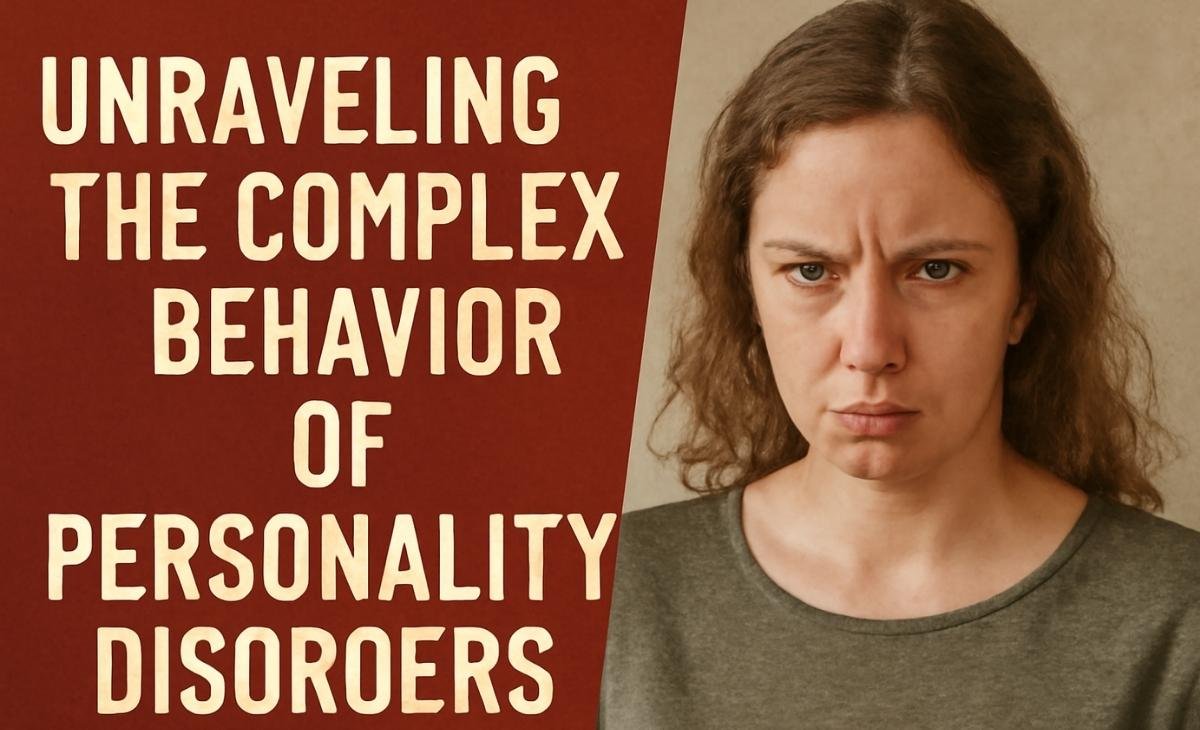Personality, a brief overview:
From introverted and eccentric to bold and energetic, the human personality is a unique canvas with many shades and hues of behavioral, cognitive, and emotional patterns. Over here at the best addiction treatment center in Islamabad, there are many treatments that are available here for the betterment of addicts persons under the supervision of professionals. Personality is a set of distinct characteristics, interlinked behavior, and cognitive and emotional patterns of an individual that develop over time. They are influenced by genetic and environmental factors. These factors are the individualized patterns that are unique and distinct to each one of us. Even in the same household, under the same parenting style, it is seen that each individual possesses a distinct personality. These personalized patterns are stable over time, but they change over a lifetime. The core features of personality are developed once you enter adulthood, and they remain the same. However, some elements do change over time.
There is an infinite number of complex interactions that make up different personalities. Even in ancient times, there was great interest in personality types and what it means to us. People have been trying to find a way to catalog personalities ever since Hippocrates and the ancient Greeks proposed four rudimentary temperaments. Today, psychologists often describe personality in terms of basic traits that develop over time and are individualized sets of patterns. Understanding the signs of a codependent person is crucial in recognizing when these patterns deviate from what we consider normality. These patterns, however, can show pathogenic traits as well and deviate from what we consider normality.
What is a personality disorder?
A personality disorder is a long-term set of tendencies in a person’s thinking and behavior that disrupts their functioning in the world. While personality disorders are commonly described in terms of distinct categories, research suggests that they largely reflect varying combinations of many underlying personality traits, including extreme levels of traits that all people have. These patterns are disruptive in nature and often cause problems in the life of the individual. Like other types of mental disorders, they can lead to infallible and prolonged dysfunction in the individual with the disorder, even when the characteristics that make up the personality disorder seem adequate or rational to that person.
Prevalence:
Personality disorders are common and very chronic in nature. According to a Cambridge University press report, the worldwide prevalence is 9% of the general population, and the duration is expressed in decades (Winsper et., al, 2020). Personality disorders are also predisposing factors for other psychiatric disorders (e.g., substance use disorders, suicide, impulse control disorders, anxiety disorders, and eating disorders). This personality disorder causes must be revealed and hinders the treatment and interfere with the outcomes of many clinical disorders and increase the personal growth, disease, and morality of these individuals who are already suffering inevitably.
Individual response to diagnosis:
Individuals with personality disorders express more denial of their problem and refuse psychological help as compared to individuals with other disorders. These individuals demonstrate a strong moral opinion created by their disruptive cognitive and emotional patterns that are ego-syntonic (adequate to ego) and alloplastic (try to change the extrinsic or environmental factors rather than intrinsic and personal factors) in nature. These patterns partake in molding the behavior that is problematic and undesirable. They cannot see the extent of their problem and are indifferent to solving it and receiving help. Therefore, show no interest in recovery and are unpathetic to recovery. It is especially seen in substance use disorder patients as they show no remorse or guilt for their substance use and maladaptive habits.
Classification of personality disorder:
Cluster A:
- Paranoid Personality Disorder: Individuals with this disorder are highly suspicious and mistrustful of others, often interpreting harmless actions as malevolent intentions.
- Schizoid Personality Disorder: People with this disorder have difficulty forming close relationships and prefer solitary activities. They often appear emotionally detached and indifferent.
- Schizotypal personality disorder: Individuals with SPD display a wide and abnormal range of unconventional and odd behaviors.It includes very unusual and peculiar thought patterns, often observed in individuals struggling with Xanax addiction. While they do not experience full-blown psychosis like schizophrenia, they have characteristics that resemble milder forms of schizophrenia.
Cluster B:
- Borderline personality disorder: Individuals with BPD experience intense and unstable emotions, struggle with self-identity, and have difficulty maintaining stable relationships.
- Narcissistic Personality Disorder: People with this disorder have an exaggerated sense of self-importance, a need for admiration, and a lack of empathy for others.
- Antisocial Personality Disorder: Those with this disorder display a disregard for the rights and feelings of others, engage in impulsive and irresponsible behavior, and often have a history of legal problems.
- Histrionic personality disorder: Individuals with HPD exhibit a consistent pattern of attention-seeking behavior and a strong desire to be the center of attention.
Cluster C:
- Avoidant Personality Disorder: People with this disorder have an overwhelming fear of rejection and social situations, leading them to avoid social interactions and opportunities.
- Dependent Personality Disorder: Individuals with DPD excessively rely on others for decision-making and emotional support, often feeling helpless and clingy in relationships.
- Obsessive-Compulsive Personality Disorder: People with OCPD are preoccupied with orderliness, perfectionism, and control, often at the expense of flexibility and spontaneity.
Symptoms and impact:
Personality disorders manifest differently in individuals, but common symptoms include:
- Distorted self-image and self-esteem
- Difficulty maintaining healthy relationships
- Impaired emotional regulation
- Impulsive and risky behaviors
- Difficulty adapting to change
- Maladaptive coping mechanisms
These symptoms can significantly impact daily life, leading to problems at work, school, and in personal relationships. Individuals with personality disorders may struggle with maintaining stable employment, experience frequent conflicts with others, and face challenges in managing stress and emotions effectively, often requiring guidance in overcoming addiction challenges.
Causes and Risk Factors:
The development of personality disorders is thought to result from a complex interplay of genetic, environmental, and psychological factors. Genetic predisposition can increase the likelihood of developing a personality disorder, while adverse childhood experiences, such as neglect, abuse, or inconsistent parenting, may contribute to the disorder’s development.
Biological factors also play a vital role:
- Hormones. Persons who exhibit impulsive traits also often show high levels of testosterone, 17-estradiol, and estrone.
- Smooth Pursuit Eye Movements. Smooth pursuit eye movements are saccadic (i.e., jumpy) in persons who are introverted, who have low self-esteem and tend to withdraw, and who have schizotypal personality disorder.
- Neurotransmitters. Endorphins have effects similar to those of exogenous morphine, Such as analgesia and the suppression of arousal. High endogenous endorphin levels may be associated with persons who are phlegmatic.
- Electrophysiology. Changes in electrical conductance on the electroencephalogram
(EEG) occur in some patients with personality disorders, most commonly antisocial and
borderline types; these changes appear as slow-wave activity on EEGs. (Kaplan and Sadock,
Treatment Approaches:
Treating personality disorders is often challenging and requires a multidimensional approach that may include the following:
- Psychotherapy: Psychotherapy, particularly dialectical behavior therapy (DBT) and cognitive-behavioral therapy (CBT), is the primary treatment for most personality disorders. These therapies aim to help individuals modify maladaptive thought patterns and develop healthier coping strategies.
- Medication: In some cases, medication may be prescribed to manage specific symptoms associated with personality disorders, such as depression, anxiety, or impulsivity.
- Group Therapy: Group therapy can provide a supportive environment for individuals with personality disorders to practice interpersonal skills, build self-awareness, and receive feedback from peers.
- Hospitalization: In severe cases where self-harm or harm to others is a concern, short-term hospitalization may be necessary to ensure safety and stabilization.
Conclusion:
Personality disorders are complex and challenging mental health conditions that profoundly impact individuals’ lives and those around them. Early intervention, proper diagnosis, and a comprehensive treatment plan can significantly improve the quality of life for people with these disorders. Education, understanding, and empathy from society can also play a crucial role in reducing the stigma associated with personality disorders and encouraging individuals to seek help and support.
Winsper, C., Bilgin, A., Thompson, A., Marwaha, S., Chanen, A. M., Singh, S. P., Wang, A., & Furtado, V. (2020). The prevalence of personality disorders in the community: a global systematic review and meta-analysis. The British journal of psychiatry: the journal of mental science, 216(2), 69–78. https://doi.org/10.1192/bjp.2019.166

